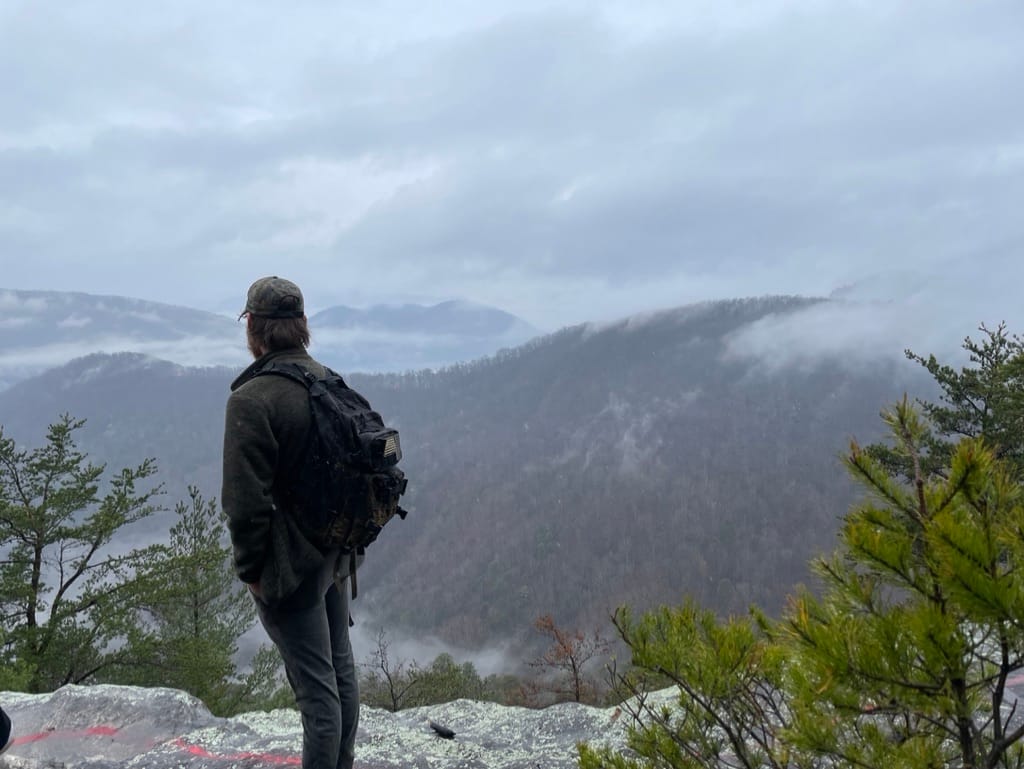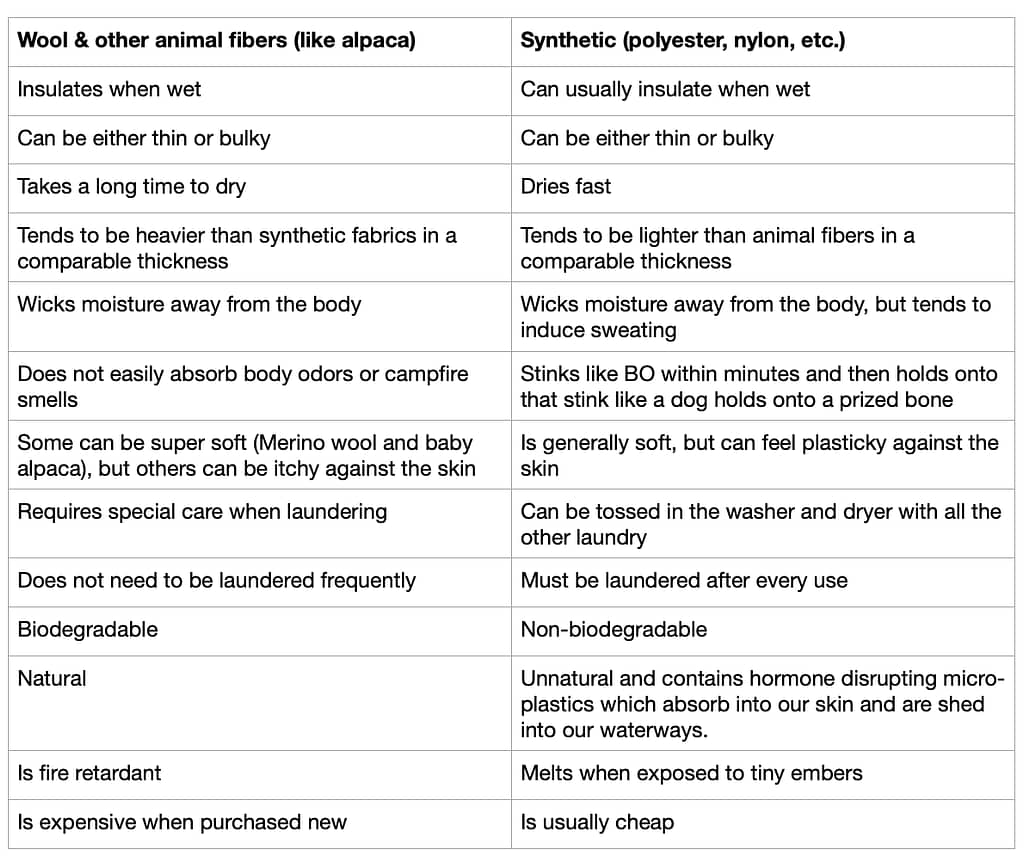This is part 3 of a series about how I learned to enjoy hiking in the winter. It did not come naturally (and still does not). The keys are Mindest, Preparation, and Clothing. Once we establish why we want to hike and then choose a trail, find some friends to join us, and prepare our gear, we need to dress appropriately.
“There is no bad weather, only inappropriate clothing.”
An Old Scandinavian Saying
With the exception of dangerous weather (high winds, lightning, etc.), I find that saying to be true. The weather is the weather. It is not good or bad. Farmers know that certain things need to be done regardless of the weather, as do thru-hikers. Day hikers have much more flexibility, but if we really want to expand our hiking season, we need to have clothes that will accommodate ‘less than perfect’ weather.
Our clothing choices can make us more or less comfortable outdoors. And some choices can actually endanger us.
So what shall we wear? First, let’s look at the fabrics.

Fabrics
For hiking, we want to choose either wool or synthetic fabrics. There are countless articles, videos, and blog posts discussing the pros and cons of each fabric. The image below is a quick breakdown of what I have found:

The more I learn about various fibers, the more I choose to purchase natural wherever possible. But I do still own some synthetics – especially for rainy and wet weather.
Cotton
I would be remiss if I did not warn you NOT to wear: cotton. Cotton absorbs sweat and rain and holds it close to our bodies. It makes us feel colder. It takes a long time to dry, keeping the skin damp. That leads to chafing and blisters. So leave the blue jeans and the cotton hoodies at home. With wool or synthetics, you can actually wear less clothing and feel warmer. It sounds crazy, I know. I have been there.
I never knew what a difference fiber content could make in keeping me comfortable. Then I started wearing wool sweaters instead of cotton hoodies. Wool really does keep me more comfortable – even off the trail. Because it wicks, it can accommodate a wider temperature range such that I do not get hot as quickly when entering a warm room. Nor do I get cold as quickly when I step outside of that hot room. It just insulates better than cotton.
If you have never hiked in anything other than cotton, I encourage you to try it. You might find that you are not as uncomfortable. You might even find that you enjoy hiking in the winter!
Down
Down puffy jackets are a common sight in the backcountry – for good reason. It is very light and packable. It insulates extremely well – when dry and lofted. However, down loses all of its insulating properties when wet. That means it is not a good choice for times when we are actively hiking. It is also not good in rain or fog. Save the down puffy for camp and rest stops.
Layers
The next thing to consider is how to wear these fabrics. In a nutshell: LAYERS.
A thick winter coat is great for sitting outdoors at a ball game. It is not great for hiking. It simply does not allow enough adjustability to accommodate widely varying exertion levels.
Again, there are tons of videos and blog posts explaining layering systems for hiking. This video is one I find helpful as it does a decent job of explaining the basics.
Please note that the gear he recommends is WAY out of my price range. However, the principles of sweat management are true whether you buy a jacket that is $250 or $10. Check below for some budget friendly ways to purchase hiking clothes. I am also working on a post featuring several modular clothing pieces which can enhance your layering system and help micromanage sweat on the trail.
Quality on a Budget
Quality hiking clothes are not cheap. As a frugal, home educating mom, I have found a few ways to get them without breaking the bank.
First, I often shop local thrift stores. With patience, this is a great way to find quality clothes for hiking. I also get the satisfaction of supporting local charities with every purchase. Be sure to check stores regularly as the good stuff goes fast.
For more specialized clothing, I like ThredUp (affiliate link). On their site, I can search for brands, sizes, and fabrics that I know fit me well. Then I save those searches so they notify me whenever an item meeting those search parameters becomes available. I have to be quick, though, as brands like Icebreaker and Smartwool sell extremely fast.
For undergarments, I put my sewing skills to use and purchase quality wool online. One of my frugal mom friends requested and received wool undies as a birthday gift. Along those lines, my family frequently gives quality wool socks as Christmas gifts.
Conclusion
Thank you for taking the time to read all the way to the end of this post. I hope this information helps you to get outside with your family more this winter.

